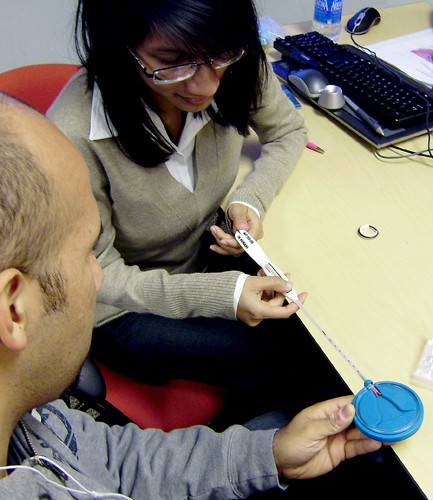Medical students must travel more than five miles to get to their next class if they want to learn to perform an abortion.
In 1974, in order to fund a $5.5 million addition to the Arizona Stadium, then-UA President John P. Schaefer sought revenue bonds. When the bonds went through the state House, Rep. James Skelly attached an amendment to the bill which prohibited performing abortions on campus — including the University Medical Canter. The UA accepted the money along with the amendment.
Thirty-six years later, the ban remains a statute in the Arizona Constitution.
When asked if UA medical students are able to observe surgical abortions on campus, Carol Galper, assistant dean of medical student education, explained simply, “”No elective abortions are performed at UMC.””
Natasha Bhuyan, president of the UA branch of Medical Students for Choice, said this is because of the 1974 stadium bill.
“”Since the procedure cannot be performed, there is no opportunity for students to clinically learn about abortions,”” she said.
What medical students do receive is a 50-minute lecture on abortion as a part of the Life Cycle block of education for second-year medical students. At the annual lecture held Tuesday, an obstetrician and gynecologist faculty member projected images of devices used for different methods of abortion while using a laser pointer to explain the procedures.
Abigail Keisler-Baird, a first-year medical student, said that even with the lecture, observation is still necessary.
“”I don’t think that (one lecture) is enough,”” Keisler-Baird said. “”I can talk to you about setting a broken bone or giving an injection or doing a pelvic exam or whatever, and we have class about that, but until you actually see a patient and perform that, it’s not good enough.””
Bhuyan added that it isn’t practical or helpful to students to limit this part of medical training.
“”It’s a bit odd that we only spend 50 minutes learning about abortion in our first two years of medical school, considering abortions are one of the most common medical procedures in the U.S.,”” Bhuyan said.
However, the latter half of medical school differs in Arizona from other states, Bhuyan said.
“”The real concern with our lack of abortion education is during our clerkships, which are the third and fourth years of medical school. During these years, we do rotations in various specialties in medicine,”” she said. “”During the OB-GYN rotations, medical students in other states are able to observe abortions in a clinical setting.””
Keisler-Baird said she feels the effect of the ban because she wants to become an obstetrician and gynecologist.
“”It’s really frustrating, personally,”” she said. “”I’m going to have to go out of my way to learn about (abortions), and if I’m going to be an abortion provider, I would like to have a lot of experience so that I know I can do it well and safely.””
Bhuyan explained that, despite their obstacles, many medical students are seeking further reproductive health education outside of the UMC.
“”Residents are also trained at Planned Parenthood,”” she said. “”In particular, this training for OB-GYN residents is essential, as abortions are a part of women’s reproductive health. Additionally, through the (Commitment to Underserved People) program, first- and second-year medical students are able to observe abortions at Planned Parenthood.””
The training received at Planned Parenthood is completely voluntary, Galper said.
“”It is the choice for the resident. No medical student or resident is required to do anything with abortion services,”” Galper added. “”This is the case most everywhere in the U.S. This does not mean they do not need the evidence-based information, which is what we teach.””
Outside of the classroom, Medical Students for Choice will be hosting an event where students who attended the group’s national conference will teach procedure techniques learned at the conference, member Keisler-Baird said.
“”We’re going to hold a clinical skills education night where those who went to the national conference can teach other medical students the procedure — not enough to where they’ll be able to go out and do it, but they’ll at least be exposed to it and have an idea of how easy, quick and accessible it is,”” she said.
Keisler-Baird said she does not think this event will be a complete education on abortion procedures.
“”We’re not physicians, but it’s a group of people who feel like there’s this need that we’re lacking for education,”” she said.









